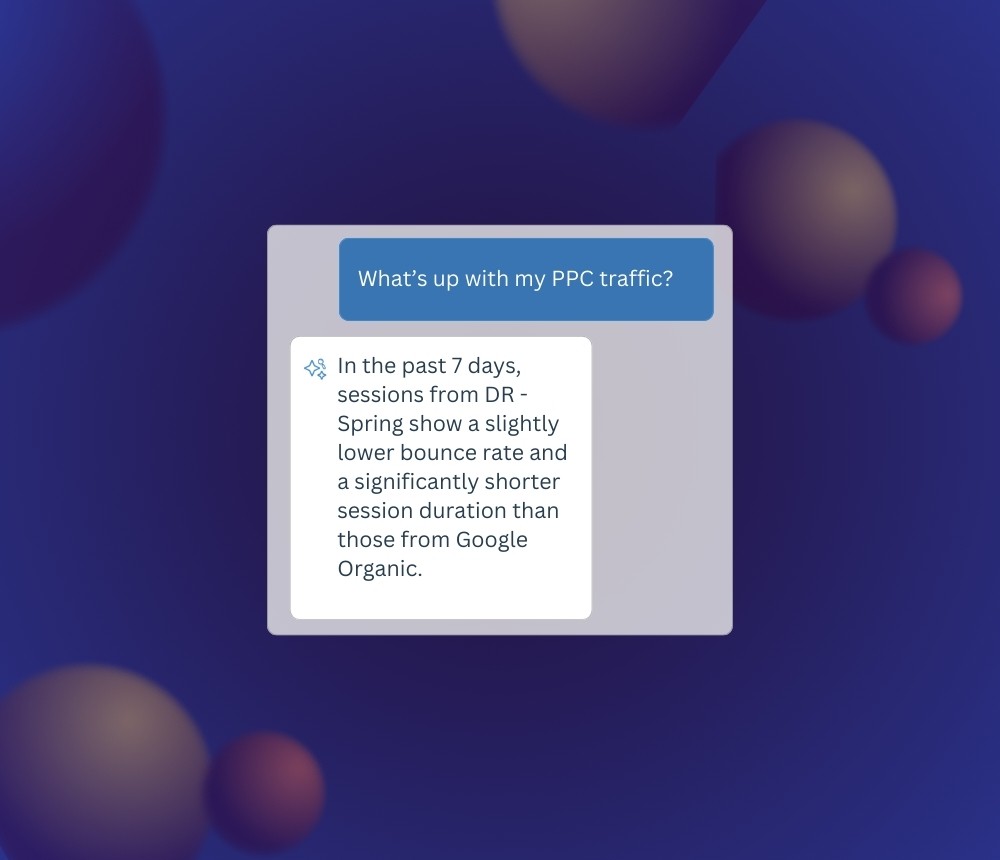Path to Profitability: Questions to Drive Revenue

The guiding light of e-commerce? Profitability.
Sounds simple: Generate more revenue than what you're spending on advertising, operating costs, etc and you'll be profitable.
But how do you make sure you're on the path to profitability? First, cover the basic steps to scale. Generating revenue at any cost is no longer acceptable. Generating profitable revenue is key to success!
In this post, we're looking at three questions with answers that lead to revenue-generating, margin-increasing strategies.
What is your break-even blended CAC & ROAS?
What are your vendor costs and where can you reduce fees in your tech stack?
How much revenue has been generated by gift cards, and what value has been redeemed?
Once you evaluate these areas of your business, you can test strategies to improve profitability. Let's dive in!
Understanding Business Operations
Understanding business operations is crucial for any organization aiming for profitability. It involves identifying and optimizing the key processes and systems that drive your business, such as production, logistics, and supply chain management. By analyzing these operations, businesses can pinpoint areas for improvement, optimize resources, and streamline processes to boost efficiency and reduce costs.
Effective business operations also encompass managing working capital, cash flows, and fund operations to ensure sufficient liquidity for meeting financial obligations. This includes managing accounts receivable, accounts payable, and inventory levels to minimize the risk of cash flow disruptions.
A well-planned business operation is essential for generating revenue and achieving profitability. It enables businesses to respond swiftly to market changes, adapt to new technologies, and innovate to stay ahead of the competition.
What is your break-even blended CAC & ROAS?
Customer acquisition cost (CAC) is the cost of acquiring a new customer through your paid marketing efforts. Blended CAC includes all your marketing channels and allows you to see how much you're spending on paid marketing (marketing costs) in relation to the revenue that those efforts bring into your business.
This helps you see whether your business is profitable or not.
How to calculate blended CAC:
Blended CAC = total ad spend/ number of new customers
Example:
Let's say you run an online pet accessory business.
In May, you spent $4,000 on Facebook ads and $3,000 on Google Ads. In that month, you acquired 900 new customers. Using the calculations above, your cost to acquire a new customer is ($7,000/900) = $7.78.
Blended Return on Ad Spend (ROAS) is how much you generate in sales for every dollar spent on paid advertising. If your blended ROAS is 2x, it means that for every $1 spent in a certain channel or campaign, you're making $3 in return.
How to calculate blended ROAS:
Blended ROAS = dollar value of sales / total advertising spend from all connected ad channels
This metric is useful when running multi-channel campaigns by giving a birds-eye view of your business, and shining a light on where to budget.
What's the right ROAS number to aim for? Unfortunately, that depends and will be different based on your industry, AOV, vertical, etc. As a baseline goal, make sure your ROAS is above 1x—and you'll be on the path to profitability.
One idea for cutting CAC and improving ROAS . . .
Diversify your outreach with Cooperative Marketing
Team up! Partner with like-minded brands in order to leverage each other's audiences to reach new customers and boost their bottom line.
Leading the co-op marketing charge is Disco, a network of consumer brands working together to cut customer acquisition costs by leveraging the power of collective data. Disco's cross-selling widget sits on a brand's order confirmation page and recommends complementary products to shoppers based on their past purchases.
This puts brands in front of new customers—and tells them where else their customers are shopping (a valuable insight).
It's a win-win for all involved.
What are your vendor costs and where can you reduce fees in your tech stack?
Look at your existing tools and services and see if you can renegotiate contracts or move to smaller plans. Try encouraging multi-vendor bidding costs when available.
One idea . . .
Use a 3PL to save time and costs
If you classify packing and shipping orders as one of the more tedious tasks in your day-to-day—you're not alone. Self-fulfilling is often a roadblock on the path to scalability.
Third-party logistics providers can provide cost-saving benefits like helping to:
Decrease the shipping distance to your customers, by more widely distributing your inventory
Reduce the weight and dimensions of packages
Find discounted supplies
Access discounted shipping rates. Pre-paid shipping can get you up to 20% off shipping costs from UPS and FedEX simply by purchasing labels upfront.
Find the lowest cost service for every shipment
On the path to profitability, continually monitor the fees associated with your tech stack and re-negotiate at a regular cadence.
Identifying Areas for Improvement
Identifying areas for improvement is a critical step towards achieving profitability. This process involves a thorough analysis of your current business operations to uncover inefficiencies and develop strategies to address them. Streamlining processes, reducing waste, and enhancing productivity are key components of this approach.
Businesses can leverage various tools and techniques to identify areas for improvement, such as data analytics, process mapping, and benchmarking. By analyzing data on customer behavior, sales trends, and operational performance, businesses can uncover opportunities to enhance efficiency, cut costs, and boost revenue.
Additionally, assessing your marketing strategy and sales processes is vital to ensure alignment with your target market and customer needs. Understanding your customers’ preferences allows you to craft effective marketing campaigns and sales strategies that drive revenue growth.
Achieving Growth and Scalability
Achieving growth and scalability is essential for businesses striving for profitability. This involves developing strategies to increase revenue, expand market share, and enhance operational efficiency. Investing in new technologies, expanding product lines, and entering new markets are all part of this growth strategy.
A robust business plan is fundamental to achieving growth and scalability. This plan should outline your company’s vision, mission, and objectives, including strategies for generating revenue, managing cash flows, and building working capital.
Building a strong team with the necessary skills and expertise is also crucial. This includes hiring experienced professionals, providing training and development opportunities, and fostering a culture of innovation and entrepreneurship. By doing so, businesses can drive forward and achieve sustainable growth.
What is the outstanding balance of my gift cards? What is my gift card redemption rate in 1 year?
Using apps like Govalo brands can offer gift cards and track their revenue, AOV, redemption rates, and more.
Digital gifting presents a large opportunity for increasing revenue and profits. Digital gift cards have two direct points of contact for a single order. You can engage with both the original customer and their recipient through email and SMS, having greater contact beyond the original order.
With gift cards, you also have the opportunity to increase sales beyond the original purchase. 75% of recipients are likely to spend over the value of their gift card, meaning that original purchase could end up being worth much more once the card is redeemed.
Tips for using gift cards as revenue drivers:
Offer a giftable subscription product
If you offer subscription products—offer them as gifts! If you're already delighting customers with your subscription experience, make it easy for them to give that same experience to friends and family.
Use as an alternative to discounting
When thinking long term, discounting threatens retention and AOV—A customer accustomed to purchasing on discount may be unwilling to ever buy at full price.
Gift cards are an attractive alternative. Instead of offering a discount, try a promotion like:
Spend over a certain amount, get a gift card, i.e. spend $100, get a $10 gift card
Buy a gift card worth a certain value, brand tops it off. i.e. Buy a $50 gift card, brand tops it off at $65
Buy a gift card, receive another one for free. i.e. buy a $50 gift card, receive a $10 gift card for free, or even matched value
Where discounts remove value, gift cards add. The value proposition changes the customer's mindset.
Use gift cards to support cash flow
Supply chain struggles? Consider offering a gift card instead of showing an item as “out of stock.”
When a customer buys a gift card, you immediately receive that revenue (plus, if the gift card is never used, your business will have a lower cost of goods).
Gift cards reveal business-boosting data
Data is essential in any business—especially e-commerce. The data you gather gives you insight into your products, customers, and store that will allow you to optimize your offerings and increase key metrics vital to the continued success of your business.
Measuring Success
Measuring success is critical for businesses aiming for profitability. It involves setting clear goals and objectives, tracking progress, and evaluating performance. Key performance indicators (KPIs) such as revenue growth, profit margins, and customer satisfaction are essential metrics to monitor.
Businesses can use various financial metrics to measure success, including return on investment (ROI), return on equity (ROE), and earnings before interest and taxes (EBIT). Non-financial metrics such as customer satisfaction, employee engagement, and social responsibility are equally important.
Regular reviews and assessments are necessary to identify areas for improvement and develop strategies to address them. By continuously monitoring and evaluating performance, businesses can make informed decisions, drive growth, and achieve profitability.
Conclusion
In the e-commerce world, profitability should be your north star. In order to make sure you're on the path to profitability, fine tune your marketing and business strategies to generate more revenue.
Ready for next level strategies and insights? Leverage Tydo's free Platform. Tydo connects all your data sources (the tools and channels you love) in one spot to create a single source of insight. We help world-class brands like Idyl, Birthdate Co., and New Era supercharge their growth!
Looking for a more custom solution? Check out Tydo Custom. Get paired with a Tydo data analyst and they'll build personalized reports, unique to your store. If you're interested in chatting with Tydo? Book time here.



